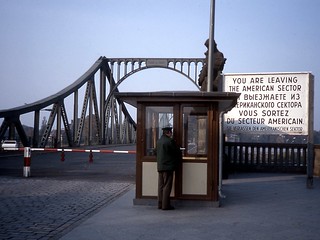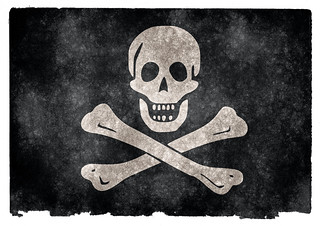 In the last post, we took a look at the She-Hulk’s patent confrontation. In this post, we will move away from superheroes and look at Thomas Jefferson’s own encounter with patents, according to Jeffrey Matsuura, the author of the book Jefferson vs. the Patent Trolls.
In the last post, we took a look at the She-Hulk’s patent confrontation. In this post, we will move away from superheroes and look at Thomas Jefferson’s own encounter with patents, according to Jeffrey Matsuura, the author of the book Jefferson vs. the Patent Trolls.
Before we begin, it’s important to mention that Thomas Jefferson was in many ways full of contradictions, most notably as a slaveholding believer in natural rights. If Jefferson were in a comic book, we wouldn’t be sure whether he was a hero or a villain. We will see that even Jefferson’s interactions with patents were at times inconsistent.
Patent Perspective
Jefferson viewed patent rights as a means to disseminate knowledge. In other words, for Jefferson, patents provided legal rights designed to encourage collaborative creativity and place inventions into society as quickly as possible. So in exchange for accessibility to inventions, Jefferson believed in granting limited monopoly rights to inventors. With this in mind, let’s take a brief historical tour of Jefferson’s varied encounters with patents, followed by a suggestion.
Jefferson the Non-Patenting Inventor
Many of the nation’s founders were citizen scientists, and Jefferson joined their ranks as a seminal innovator. Jefferson was a polymath who not only began his career as a trial lawyer but also was an inventor of many devices, including a plow. We could apply the traditional saying to him:
A jack of all trades is a master of none, but oftentimes better than a master of one.
As a renaissance figure, when Jefferson contemplated his own innovative endeavors, he believed that inventions should be useful in daily life. For example, his plow was focused on improving farm production. He put a lot of effort into documenting his invention, complete with mathematical formulas, so that farmers could build his plow for themselves. And to make his plow accessible to all, he did not patent his invention, even though he could have thanks to the federal Constitution.
Jefferson the Influencer of Patents in the Constitution
The Constitution (drafted 1787-89) summarizes the relationship between innovation accessibility and patent monopoly. Within Article One, the obligation of the government is to “promote the progress of…useful arts, by securing for limited times to…inventors the exclusive right to their respective…discoveries.” Although Jefferson was in Paris as Minister to France (1785-89) when the Constitution was drafted, it’s thought that he had an influence on its drafting based on his correspondence.
The Constitution tells the government what it is supposed to do but does not say how patent rights are to be implemented. As we will see next, Jefferson played a large role in defining that implementation when he returned to the US.
Jefferson the Patent Examiner
After Jefferson returned from France, he was appointed the country’s first Secretary of State (1790-93) by George Washington. In this role, he was an examiner of patent applications. As a patent examiner, he rejected some patent applications due to what he perceived as a lack of social benefit. For example, he thoroughly examined a sailing vessel’s onboard desalination system to provide drinking water for sailors. But he did not grant a patent because he was skeptical that this invention was the most effective system possible.
As a patent examiner, Jefferson felt the friction between ensuring that an invention deserves patent protection and lacking sufficient time to review a patent application. While Jefferson leaned towards a thorough review process, a simple registration process was implemented after 1793 that generally granted allowance to all patent applications, leaving it up to the courts to resolve patent validity. Eventually, in 1836, the patent system that we generally recognize today was enacted that created a balance between the prior registration slackness and Jefferson’s earlier examination strictness.
Jefferson the Alleged Patent Infringer
When Jefferson retired as the third US president in 1809, he returned to his plantation at Monticello. Later, he installed a new flour mill, which caused Jefferson to experience firsthand the tension between providing inventors enough incentives to disseminate their knowledge and giving patent owners too much power that effectively prohibits society’s use of inventions. Specifically, in 1813, Jefferson and other farmers were accused of using milling technology that was patented by Oliver Evans. Jefferson strongly objected to the validity of Evans’s patent, which was ironic because Evans’s patent was the third US patent ever granted—by Jefferson himself back in 1790. So Jefferson originally granted Evans the patent rights that, years later, Jefferson said were improper when he was accused of patent infringement.
Just to be clear, despite the title of Jeffrey Matsuura’s book, Oliver Evans was not a patent troll under a modern definition of that term. For example, although Evans did not sell mills, Evans’s invention was a practical improvement to milling, as opposed to being directed to a separate technology that mills utilized. So under today’s standards, Evans’s patent infringement claim would likely have been considered defensible, as the arguments against Evans’s patent had more to do with what was patentable in the early nineteenth century, as opposed to how Evans was asserting his patent rights.
Jefferson the Patent Licensing Negotiator
When Jefferson was president (1801-09), he negotiated the doubling of the size of the country with the Louisiana Purchase. So it should be no surprise that Jefferson was a skilled negotiator, who used those skills to resolve his dispute with Evans. Despite their differences, Jefferson and Evans were willing to communicate directly with each other to try to reach a resolution. In 1814, Jefferson explained to Evans his position that Evans’s patent was not novel based on Jefferson’s interpretation of patent law. Evans had an impassioned response explaining to Jefferson his business difficulties of monetizing his invention. Jefferson and Evans listened to each other carefully and eventually resolved their differences outside of the courtroom when Jefferson acquired a license from Evans that ended the litigation.
Super Listening Suggestion
The title of the book Jefferson vs. the Patent Trolls has a comic-book sound to it, but of course it’s not about superheroes. It’s clear that Jefferson did not have superpowers, as explained in the book Thomas Jefferson: The Art of Power. The author, Jon Meacham, describes Jefferson as “a breathing human being who was subject to the passion and prejudice and pride and love and ambition and hope and fear that drive most other breathing human beings.”
Yet the author points out that Jefferson developed one particular skill to an almost super level. That skill was listening, a skill that we can all improve. Jefferson recognized early in his political career that he was not a compelling public speaker, and so he overcame his speaking deficiencies by developing his listening abilities. He became attentive to others by caring about their perspectives. Thus he guided conversations to topics that he knew were interesting to others, and then followed their thoughts wherever they led.
Everyone likes to be heard, and we can all learn from Thomas Jefferson’s dedication to improve listening. In this way, we can strive to become super listeners ourselves.
Image: “freemont troll” (CC BY-ND 2.0) by MFer Photography.
Source: Matsuura, Jeffrey H. Jefferson vs. the Patent Trolls: A Populist Vision of Intellectual Property Rights. University of Virginia Press, 2008.
Source: Meacham, Jon. Thomas Jefferson: The Art of Power. Random House, 2013.

 Like it or not, the Incredible Hulk smashes stuff. The Hulk at his core wants to defend the innocent from harm, but he also causes an enormous amount of suffering as he lays waste to anything in his berserk path. Patent litigation can feel like a collision with the Hulk. Both patent owners and alleged infringers will often feel smashed by patent litigation, regardless of who prevails. As patent litigation plods forward, it can abruptly careen out of control in startling ways. It’s kind of like the Hulk, who gains more gamma-radiation strength the angrier he gets. And like litigants trying to manage patent proceedings, Bruce Banner (the Hulk’s alter ego who is a brilliant scientist) cannot constrain the Hulk no matter how hard he tries.
Like it or not, the Incredible Hulk smashes stuff. The Hulk at his core wants to defend the innocent from harm, but he also causes an enormous amount of suffering as he lays waste to anything in his berserk path. Patent litigation can feel like a collision with the Hulk. Both patent owners and alleged infringers will often feel smashed by patent litigation, regardless of who prevails. As patent litigation plods forward, it can abruptly careen out of control in startling ways. It’s kind of like the Hulk, who gains more gamma-radiation strength the angrier he gets. And like litigants trying to manage patent proceedings, Bruce Banner (the Hulk’s alter ego who is a brilliant scientist) cannot constrain the Hulk no matter how hard he tries. “Yeah, mate, I know, but you’ve got to keep on moving.” These were the words from Mount Everest’s Basecamp to
“Yeah, mate, I know, but you’ve got to keep on moving.” These were the words from Mount Everest’s Basecamp to  In Stephen Spielberg’s movie
In Stephen Spielberg’s movie  In Gilbert and Sullivan’s comic opera
In Gilbert and Sullivan’s comic opera  Street photographers have an eye for seeing reality from new perspectives. Just as film is exposed to light, street photographers can teach us how to expose our understanding to the reality of our conflicts. The documentary
Street photographers have an eye for seeing reality from new perspectives. Just as film is exposed to light, street photographers can teach us how to expose our understanding to the reality of our conflicts. The documentary